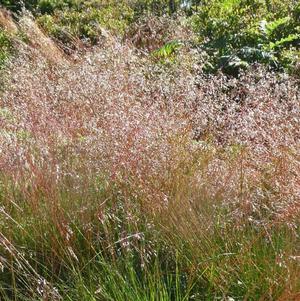General Description
Bloom Description: Blooms from June to July. Brown male catkins and small, yellow-green female flowers.
Growth Habit & Shape: A short, spreading rhizomatous shrub.
Soil Preferences: Well-drained soils. Can thrive in sandy, poor soils where little else is growing.
Root Description: Rhizomatous.
#REF! Best Management & Maintenance: Although this species can be fast spreading in its natural habitat, nursery stock can take time to establish. Does not transplant well. Suckers can be occasionally thinned out as desired.
Common Problems: None.
Benefits
Ornamental Value: Lovely form and striking leaf texture. The seeds are held in a whimsical, green structure that resembles a pompom. Foliage can turn orange-red in the fall if exposed to enough sunlight.
Wildlife Benefits: Comptonia peregrina is the host of 49 species of lepidoptera throughout its range, including the sweetfern underwing moth (Catocala antinympha) and the gray hairstreak (Strymon melinus). Cedar waxwings also eat their fruits and eastern cottontails use this shrub as cover.
Other Practical/Environmental Benefits: Sweetfern is well known for its nitrogen fixation, salt tolerance, deer resistance, and slope stabilization.
Use in place of:
Ecology
Habitat:
Per the USDA, sweetfern grows in openings in coniferous forests in well-drained, dry, acid, sandy or gravelly soils. Because it fixes nitrogen, it does well on disturbed sites or sites with sterile soil, such as abandoned fields and pine barrens.
Response to Disturbance: Sweetfern seeds are long lived and have proven to colonize areas quickly after disturbance events. Does not transplant well.
Native State Distributions:
Canada: NB, NS, ON, PE, QC
USA: CT , DC , DE , GA , IL , IN , KY , MA , MD , ME , MI , MN , NC , NH , NJ , NY , OH , PA , RI , SC , TN , VA , VT , WI , WV
Wetland indicator status: Not classified
Companion Plants:
Bearberry (Arctostaphylos uva-ursi), New Jersey tea (Ceanothus americanus), bush honeysuckle (Diervilla lonicera), black huckleberry (Gaylussacia baccata), small bayberry (Morella caroliniensis), Virginia rose (Rosa virginiana), and little bluestem (Schizachyrium scoparium).
References
Return to Top
